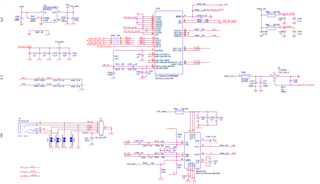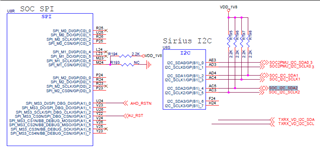Hi,
Our device use 3104 to deal with audio application. each device's audio function is ok before deliver to customer. but we have received any repsonding that audio function is not ok. we check the device and find i2c accessing fail for 3104. Aduio function is ok after replace a new chip. Could you pls review the hardware schematic diagram for us?
many thanks.
wayne.



